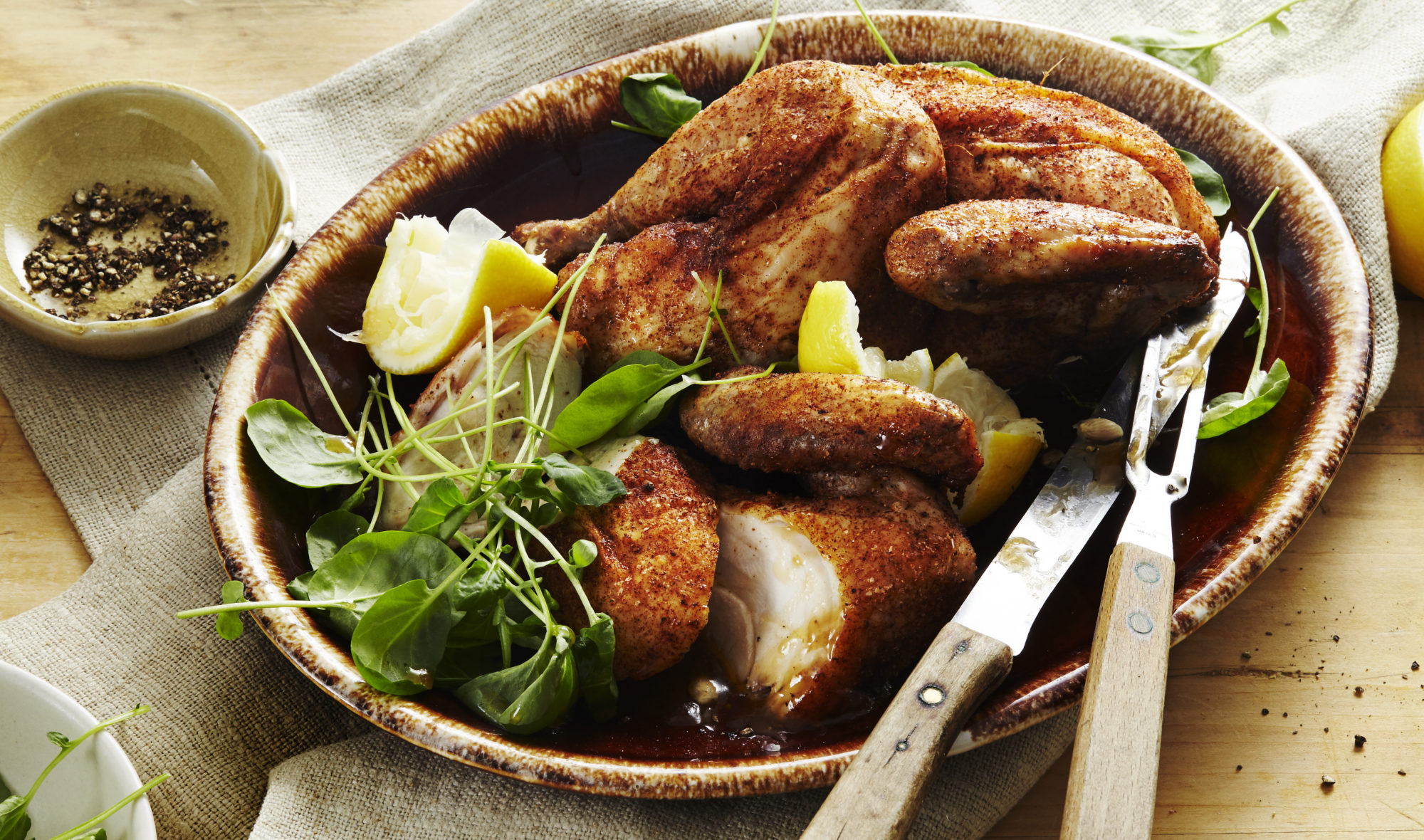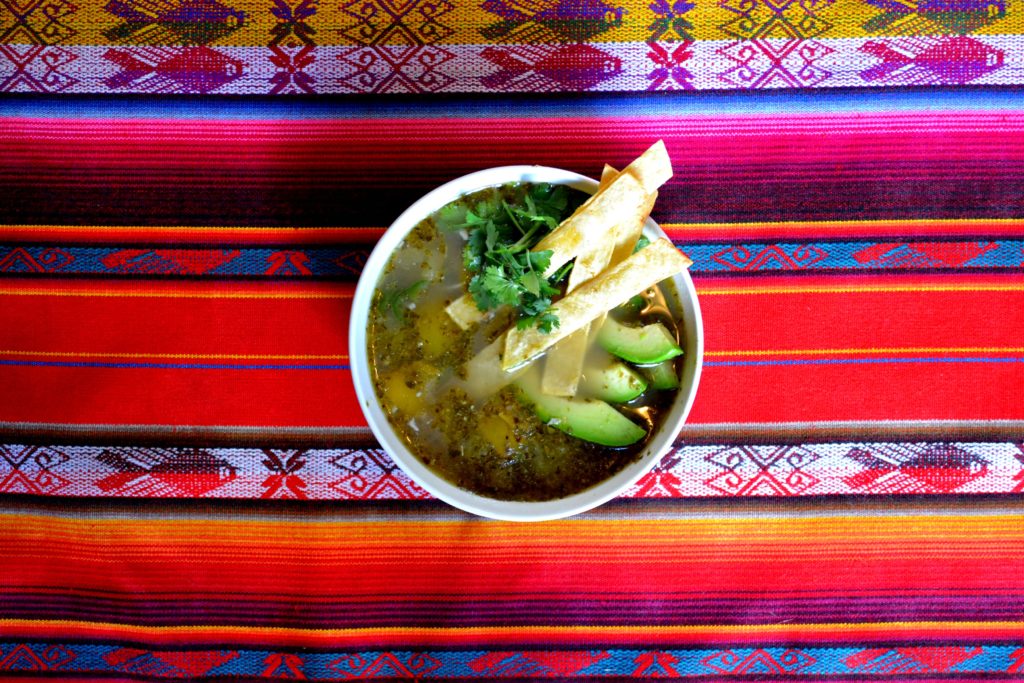
Join PN Level 2 for less than $9 USD/day! Affordable monthly payments now open.

Chicken, ubiquitous and versatile, is a favorite staple in North American kitchens. This humble bird also appears on dishes around the world in the form of soups, stews, curries, stir-frys, salads, sandwiches, roasts, and even reconstituted into crispy breaded dinosaur shapes. Chicken is widely available and yields many edible parts. The most commonly eaten parts include breasts, thighs, drumsticks, and wings. Also edible, although less popular, include organs like the liver (often made into pâté), heart, kidneys, and gizzard, as well as the rendered fat (also known as schmaltz), the feet, and the carcass (which can be used to make stock). Chicken has a mild, umami flavor and when prepared properly, is tender and juicy. Chicken is an excellent source of protein, and makes a wonderful neutral canvas for a variety of herbs and spices.
If there is an “America’s Sweetheart” of the meat world, it’s chicken.
Since the early nineties, when concerns about the negative health effects of saturated fats and red meat rose (now a highly contested debate), so rose the consumption of chicken. Today, it continues to be among the most ubiquitous and versatile of animal products, appearing on plates around the world in soups, stews, curries, stir-frys, salads, sandwiches, roasts, and even reconstituted into crispy breaded dinosaur shapes.
The modern chicken is a descendant of the junglefowl – a leaner, more flamboyant species – which hails from South Asia, where it was domesticated thousands of years ago. Hybridized across generations, the heavy, muscular chickens we are most likely to eat today belong to either Cornish or White Rock breeds.
The rise of industrial chicken farming has also made chicken products more available than ever, although not without consequences to both a chicken’s quality of life as well as the nutritional quality of the meat.
Chickens, whether they are industrially farmed or free range and ethically raised, are widely available either whole or in a variety of cuts. Like a Noah’s Ark of chicken parts, a whole chicken is typically divided into paired parts: two drumsticks, two thighs, two breast halves, and two wings.
Note that no part of a chicken is naturally breaded and shaped like a brontosaurus.
Chicken will vary subtly in flavor, texture, and color, depending on what part of the bird you are eating, and how it has been prepared.
When raw, chicken ranges from a dusty rose color to pale pink, and when cooked, it ranges from beige to off-white.
Generally, when prepared properly and not overcooked, chicken is tender and juicy with a mild animal umami flavor. Darker meat cuts of chicken tend to be slightly fattier and more flavorful, and also tenderer. White meat cuts, such as the breast, are blander tasting and are also drier and tougher, especially when overcooked.
Most of the chicken’s fat is concentrated on the skin, which crisps up during high heat cooking, and may be removed prior to or after cooking.
Three ounces of oven roasted skinless chicken breast (about 100g) has 79 calories, 16.8g protein, 0.4g of fat, 2.2g of carbohydrates, and no significant fiber or sugar. Although chicken breast is an excellent source of lean protein, it is not a significant source of any vitamins or minerals. That’s what your side salad is for.
Note that values will differ depending on what part of the chicken you are eating. Darker cuts and organ meats will have a much higher vitamin and mineral content, and cuts with skin attached will have more fat and more calories.
When purchasing chicken products, there are many parts to choose from.
The most common parts include white, lean meats like the breast; darker, fattier meats like the thigh, drumstick, and wing; organs like the liver (often made into pâté), heart, kidneys, and gizzard; and other products such as eggs, rendered fat (also known as schmaltz), and the feet and carcass (which can be used to make stock).
A general rule for buying meat is to shop at stores you trust, where you can ask questions about the source, quality, and farming practices of the meat you’re purchasing. Local butchers, farmers’ markets, and grocery stores with well-trained staff are excellent places to start these relationships.
Always check the expiration date on the package to ensure freshness. Fresh chicken should have little to no odor and appear rosy or creamy colored, depending on the cut, and whether the skin is still on. If the meat shows signs of greying or is emitting a foul odor, drop it and run.
Well-sealed, raw chicken can be stored in the fridge for up to two days before cooking, or frozen for up to six months. Cooked chicken will stay fresh in the fridge for about three to four days.
Thaw frozen chicken in the fridge (rather than on the counter at room temperature) for safest results. A general guideline for thawing time is that it takes about 24 hours to thaw a whole five-pound chicken, and about five hours per pound for chicken pieces.
Raw chicken can harbor salmonella bacteria, so when preparing raw chicken, it’s important to work in a clean, organized manner. Wash everything that touches raw chicken well, with hot water and soap.
Chicken pieces are easy to cook on the stovetop, on the barbecue, or roast in the oven, and it is a particularly satisfying feat to roast a whole chicken.
However, by far the simplest cuts to prepare are chicken cutlets, which are thin slices of chicken breast.
In order to cook them, place a pan over medium-high heat on the stovetop and season it with olive oil or coconut oil. Once the oil is hot and sizzling, place your chicken cutlets in the pan, leaving space between each piece, and sprinkle over your choice of seasoning, be it fresh garlic, rosemary, and lemon; grated ginger root and curry powder; or sundried tomatoes and dried basil. Chicken, with its mild, neutral flavor, is versatile and amenable to a variety of herb and spice combinations – the choice is yours. When the sides of the cutlet begin to lift from the pan, flip it over and season the other side. The chicken cutlets, depending on their thickness, should cook within five to seven minutes. They are done when the outsides are golden and the insides show no traces of pink.

This soup combines the deep, grounding flavors of roasted chicken and garlic with the fresh and uplifting flavors of cilantro, avocado, and lime. Jalapeno gives the dish some bite, and tortilla chips give it some crunch. This soup is a fiesta for your mouth.
Prep Time: 10 minutes Cook Time: 90 minutes Yield: 6-8 servings
Begin by adding the olive oil and garlic to a large pot. Cook over medium heat until garlic is lightly browned and roasted.
Next, add chicken thighs to the pot, and cook them until they are lightly browned on both sides.
Once the chicken thighs are lightly browned on both sides, add the broth and oregano. Turn down the heat to medium-low, cover your pot, and cook for about an hour, or until chicken has lost its rubberiness and starts to break apart easily.
Once the chicken has been tenderized, add the tomatoes and jalapeno peppers, and cook for an additional five minutes, then remove the soup from heat.
Once the soup has cooled slightly, taste it. Depending on the broth you used, you may need to add salt.
Before serving, top each soup blow with a small handful of chopped cilantro, half a sliced avocado, the juice of half a lime, and a handful of tortilla chips. Serve and enjoy!
Precision Nutrition’s Encyclopedia of Food expands every single month as we highlight new foods and showcase beautiful food photography. If you’d like to stay up to date, simply click this link. From there, we’ll send you a FREE copy of our recipe book. We’ll also let you know when new and delicious foods are added to the site.
Chicken, ubiquitous and versatile, is a favorite staple in North American kitchens. This humble bird also appears on dishes around the world in the form of soups, stews, curries, stir-frys, salads, sandwiches, roasts, and even reconstituted into crispy breaded dinosaur shapes. Chicken is widely available and yields many edible parts. The most commonly eaten parts include breasts, thighs, drumsticks, and wings. Also edible, although less popular, include organs like the liver (often made into pâté), heart, kidneys, and gizzard, as well as the rendered fat (also known as schmaltz), the feet, and the carcass (which can be used to make stock). Chicken has a mild, umami flavor and when prepared properly, is tender and juicy. Chicken is an excellent source of protein, and makes a wonderful neutral canvas for a variety of herbs and spices.